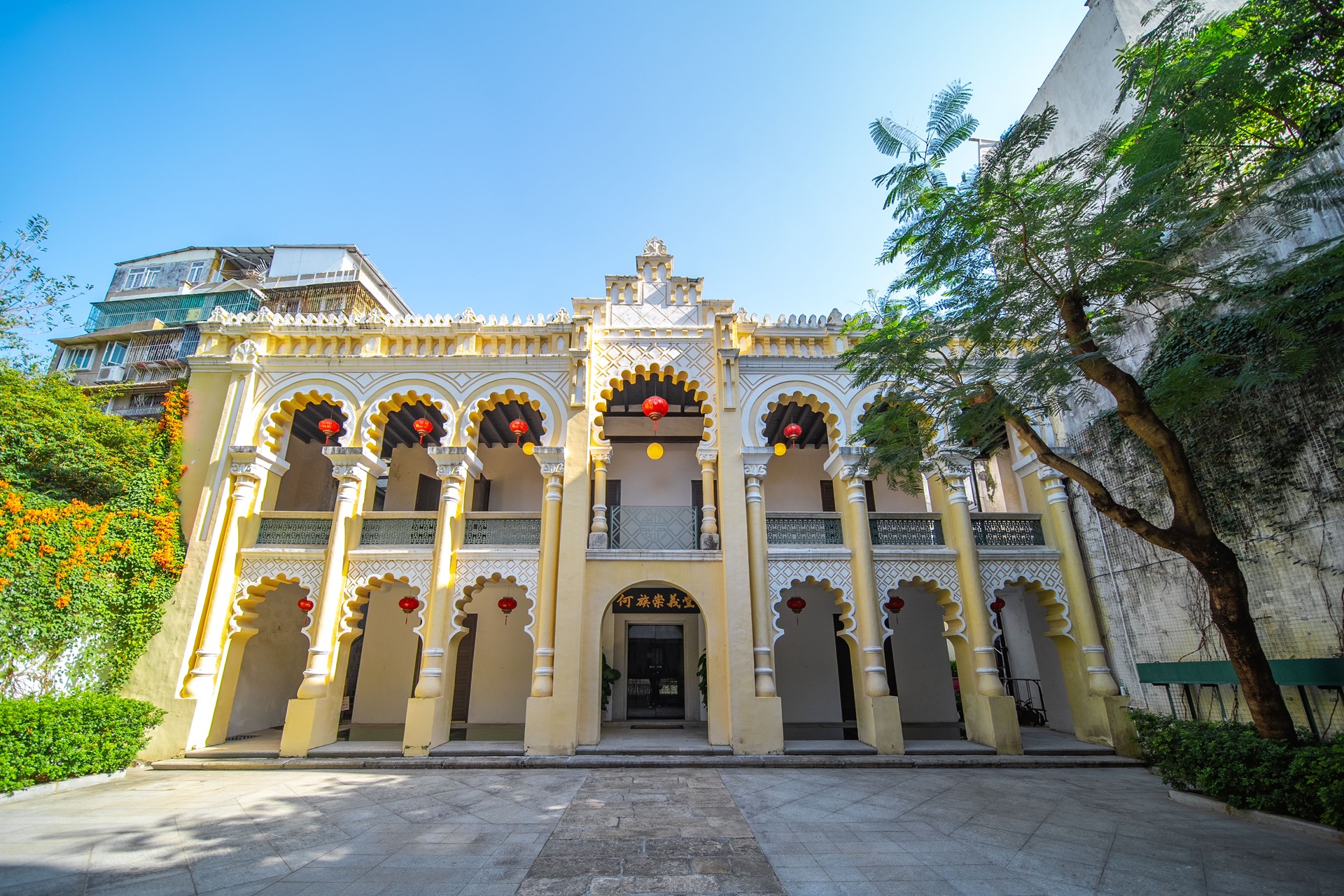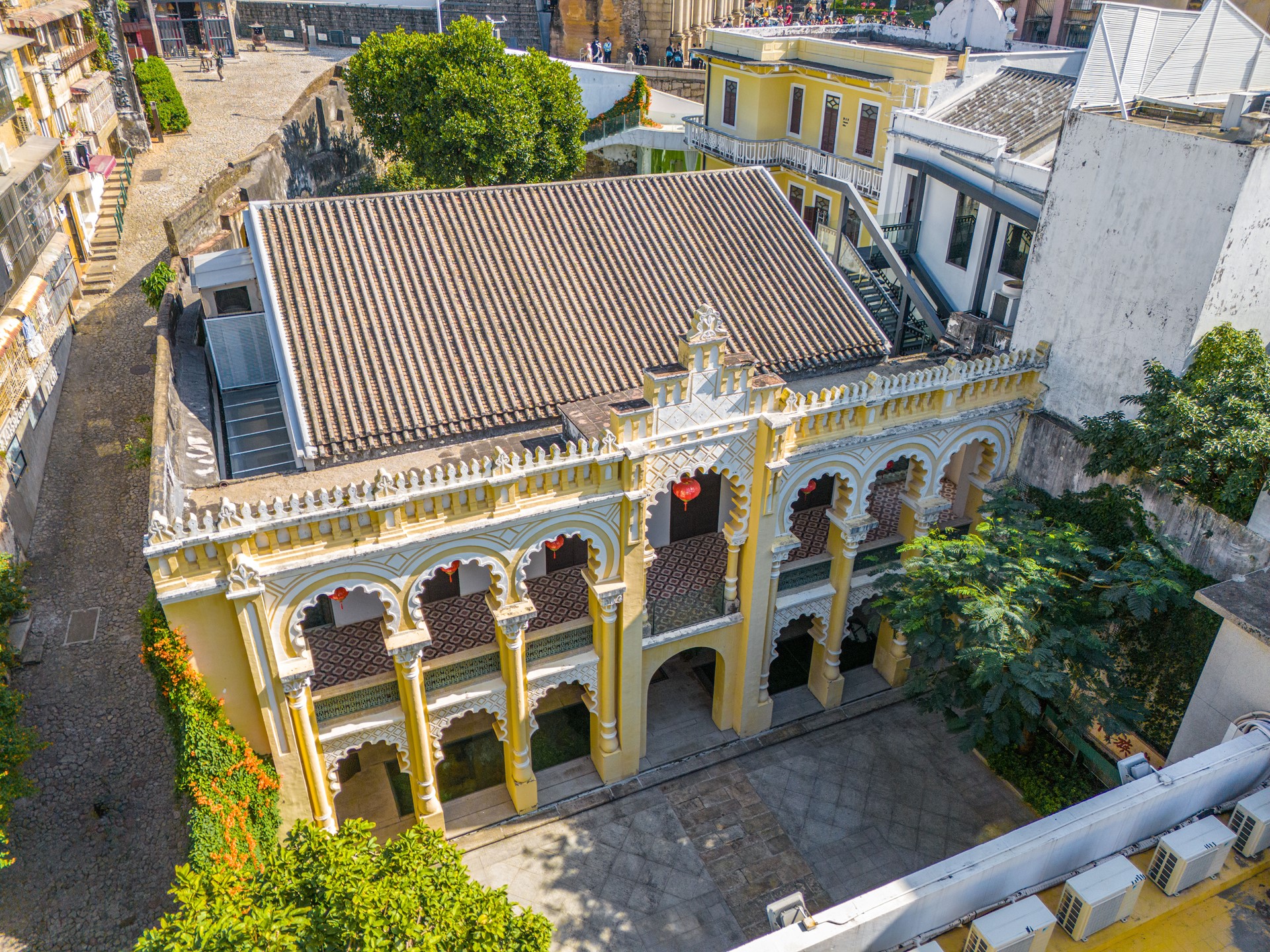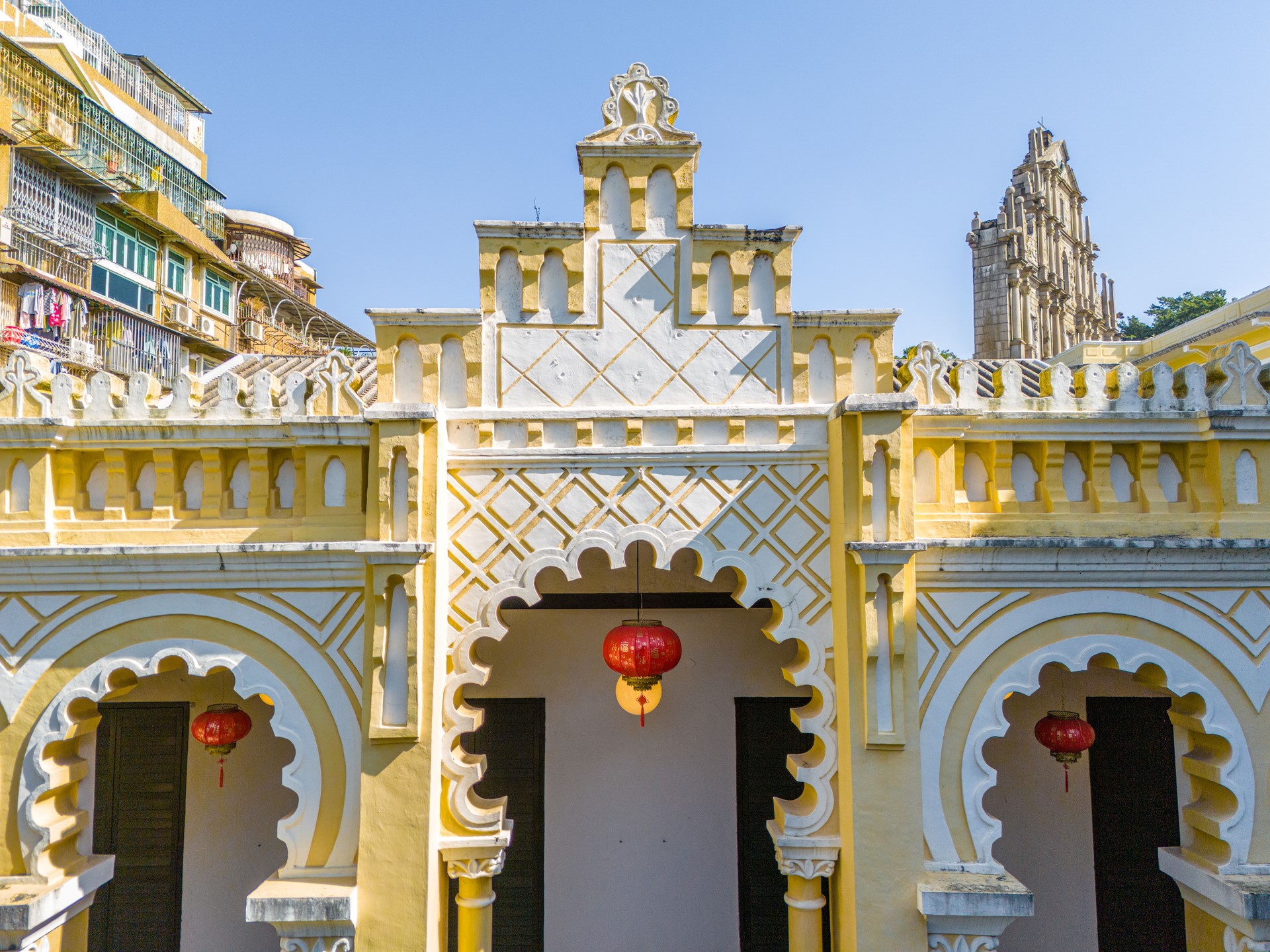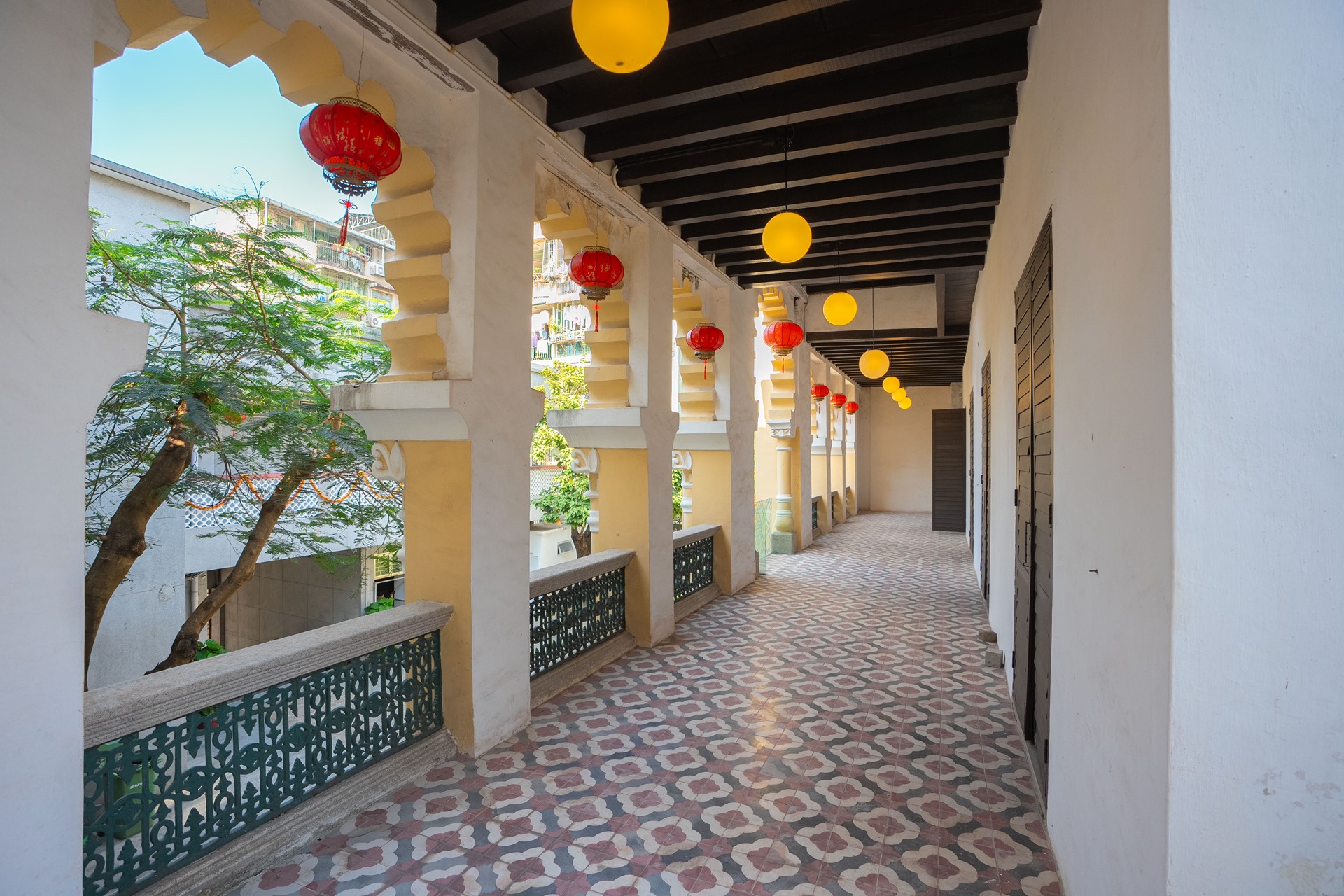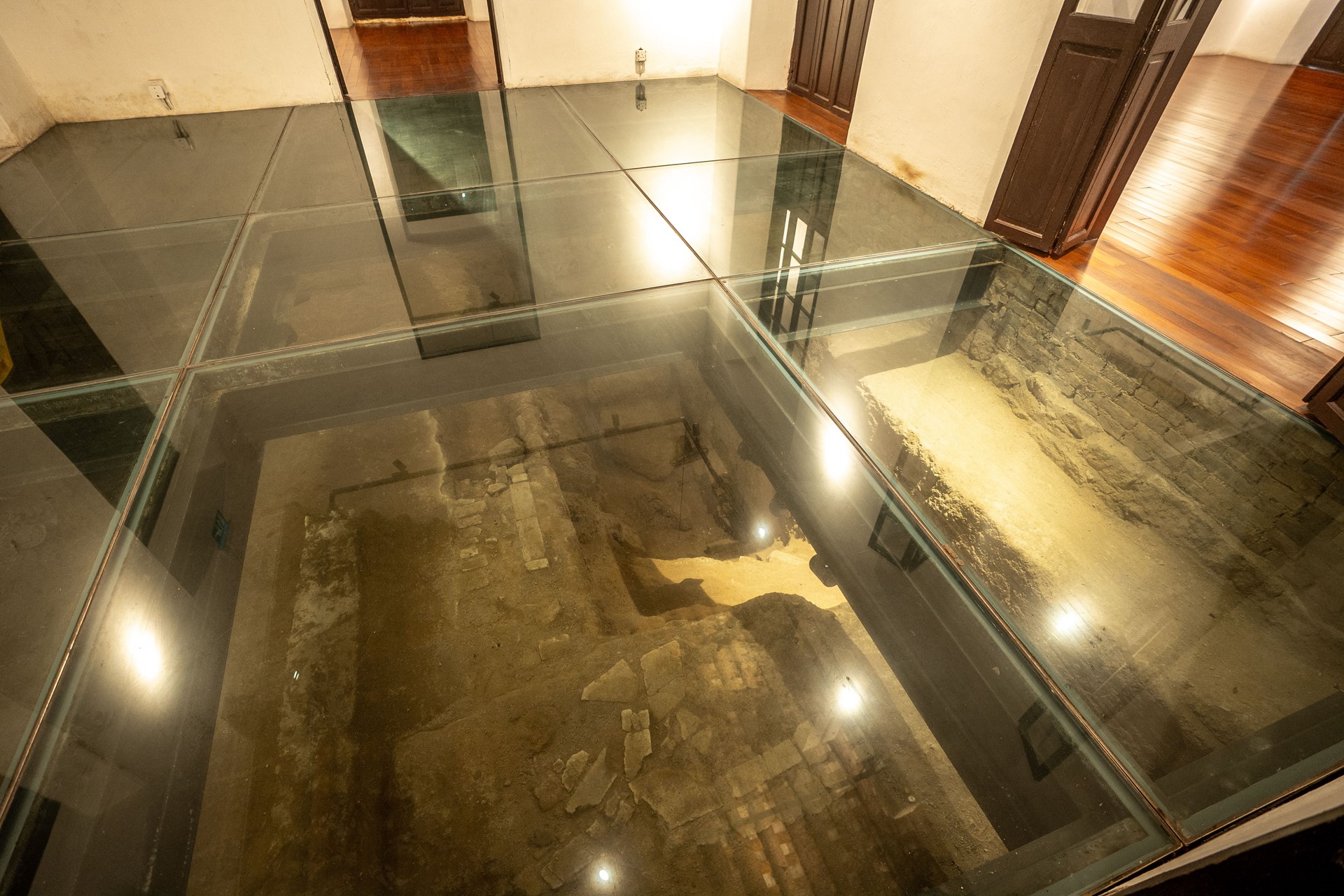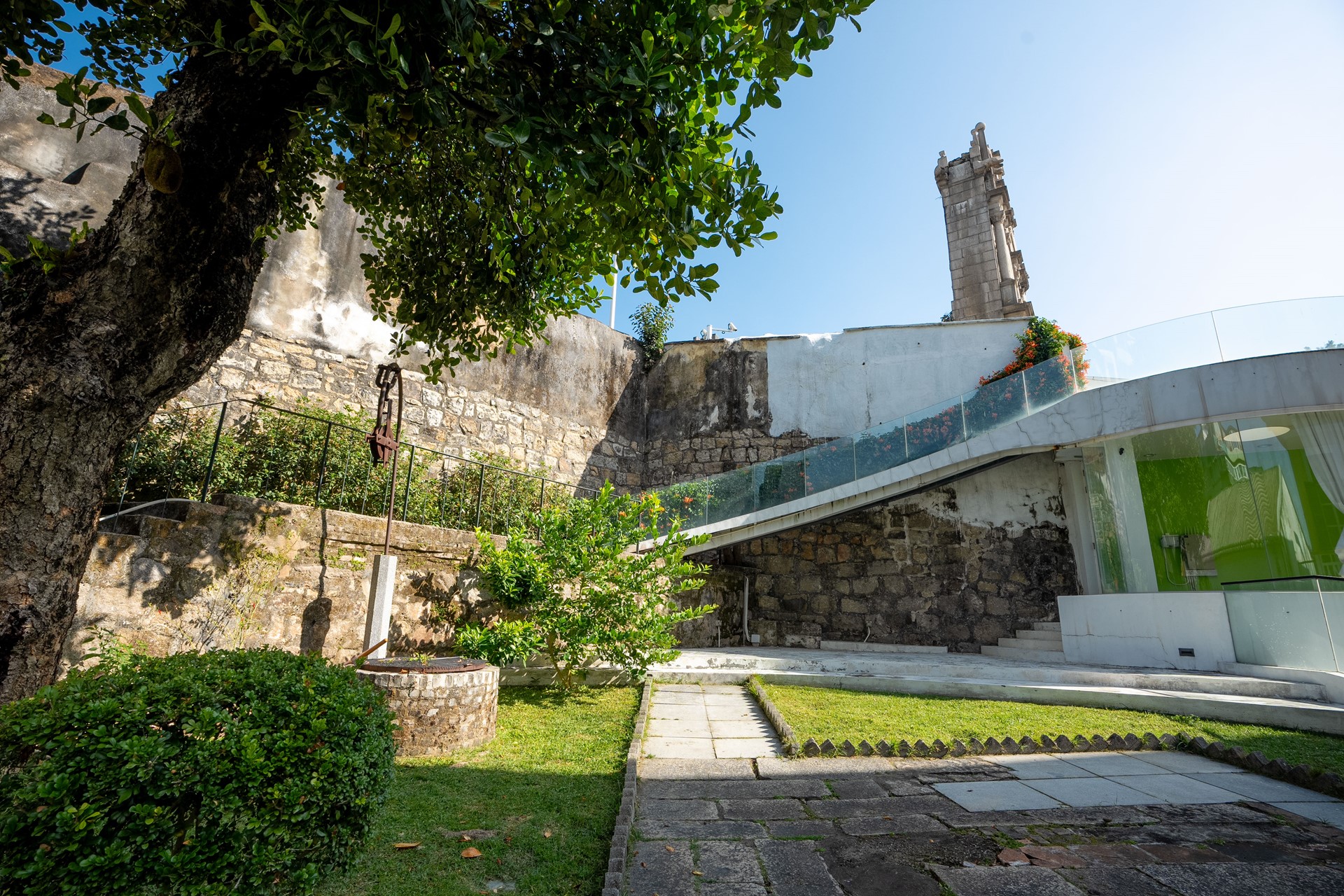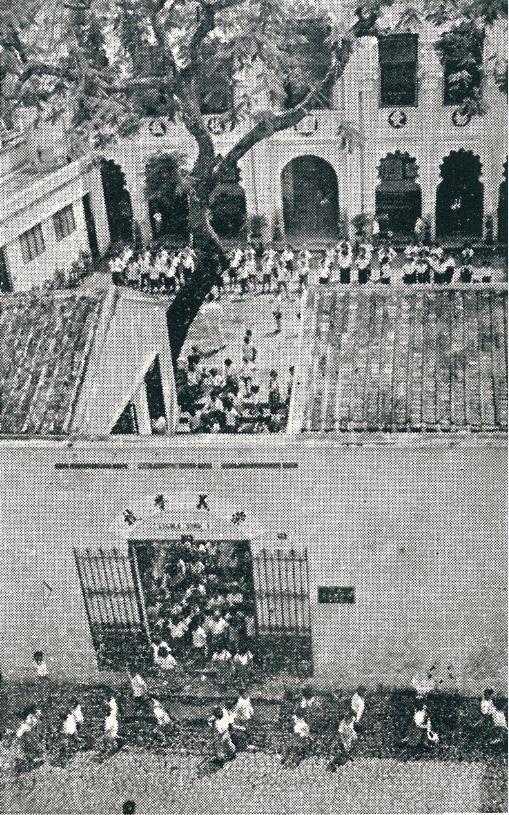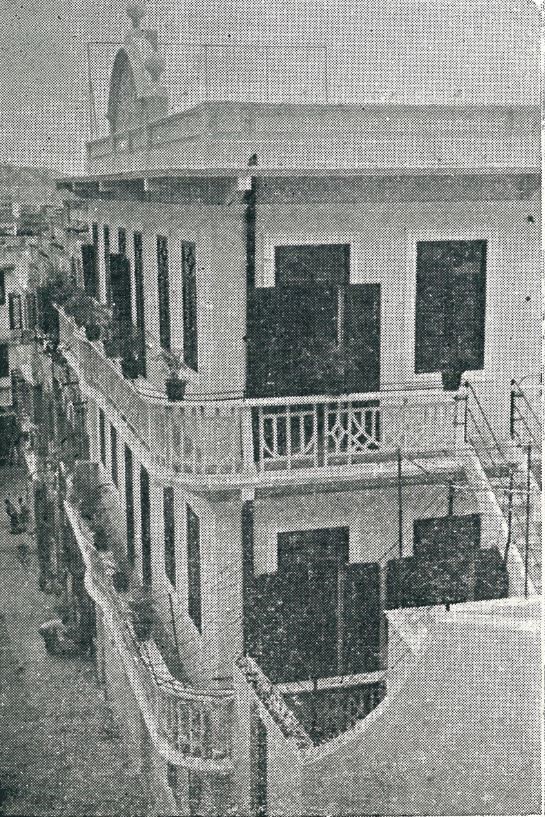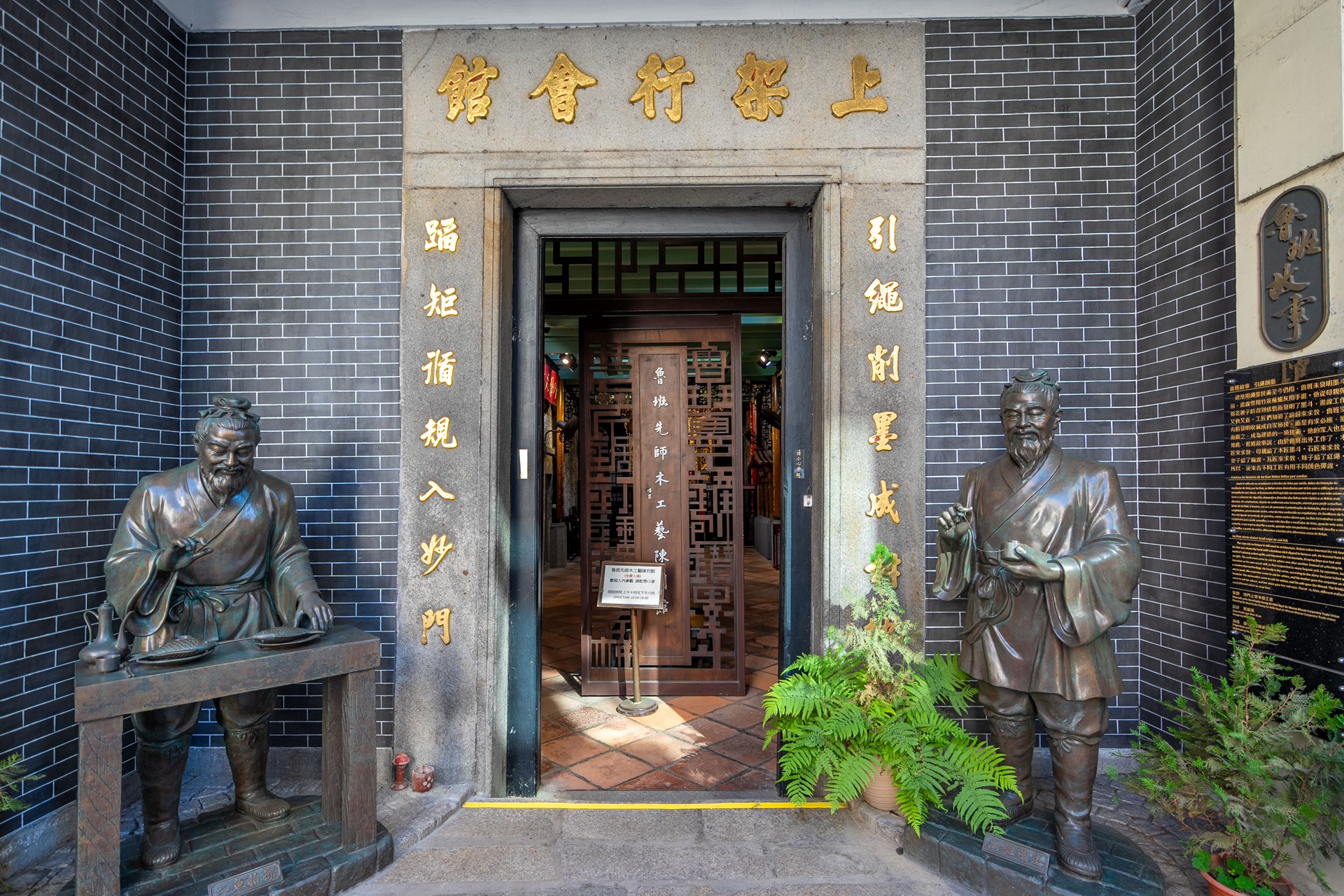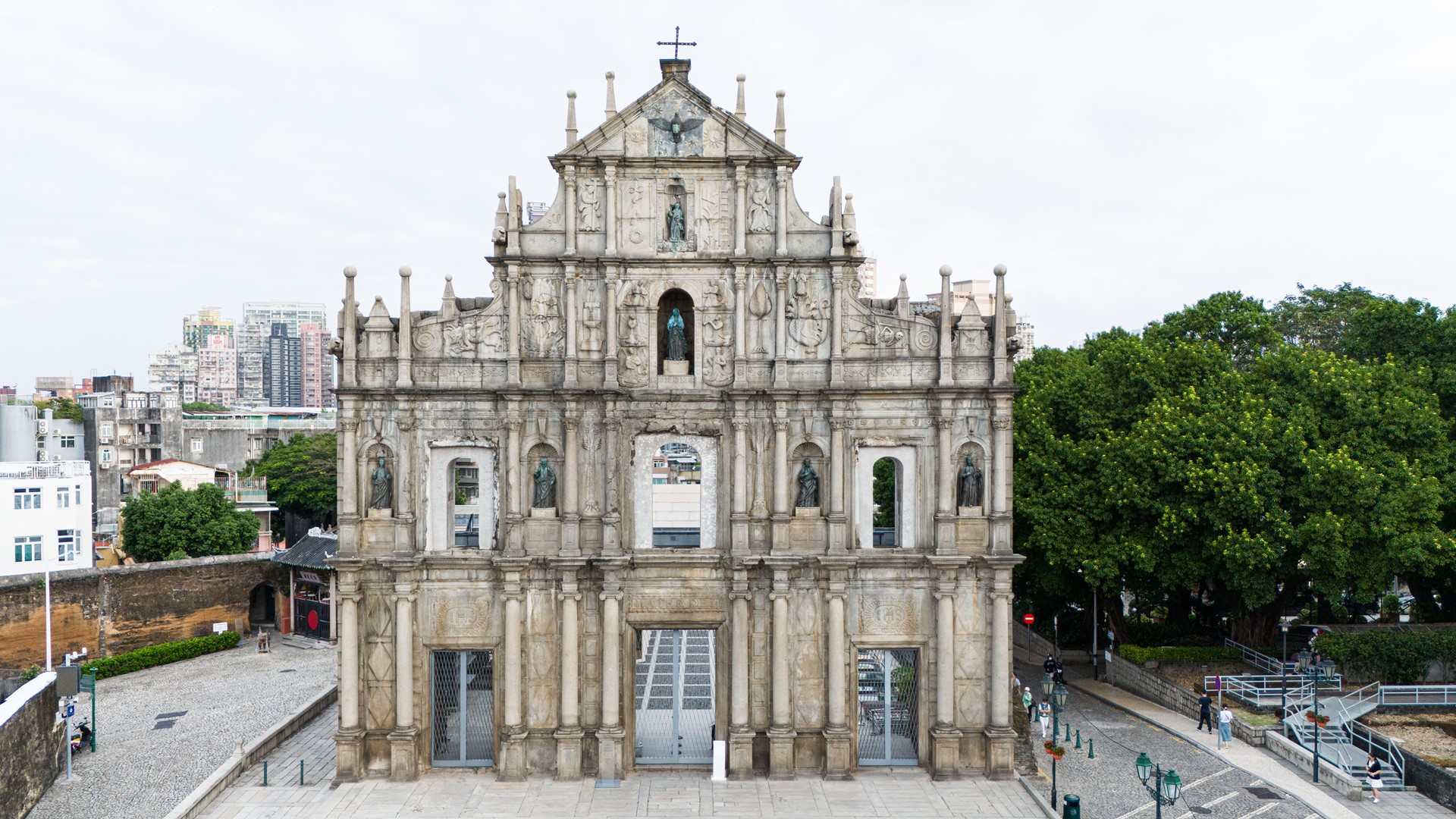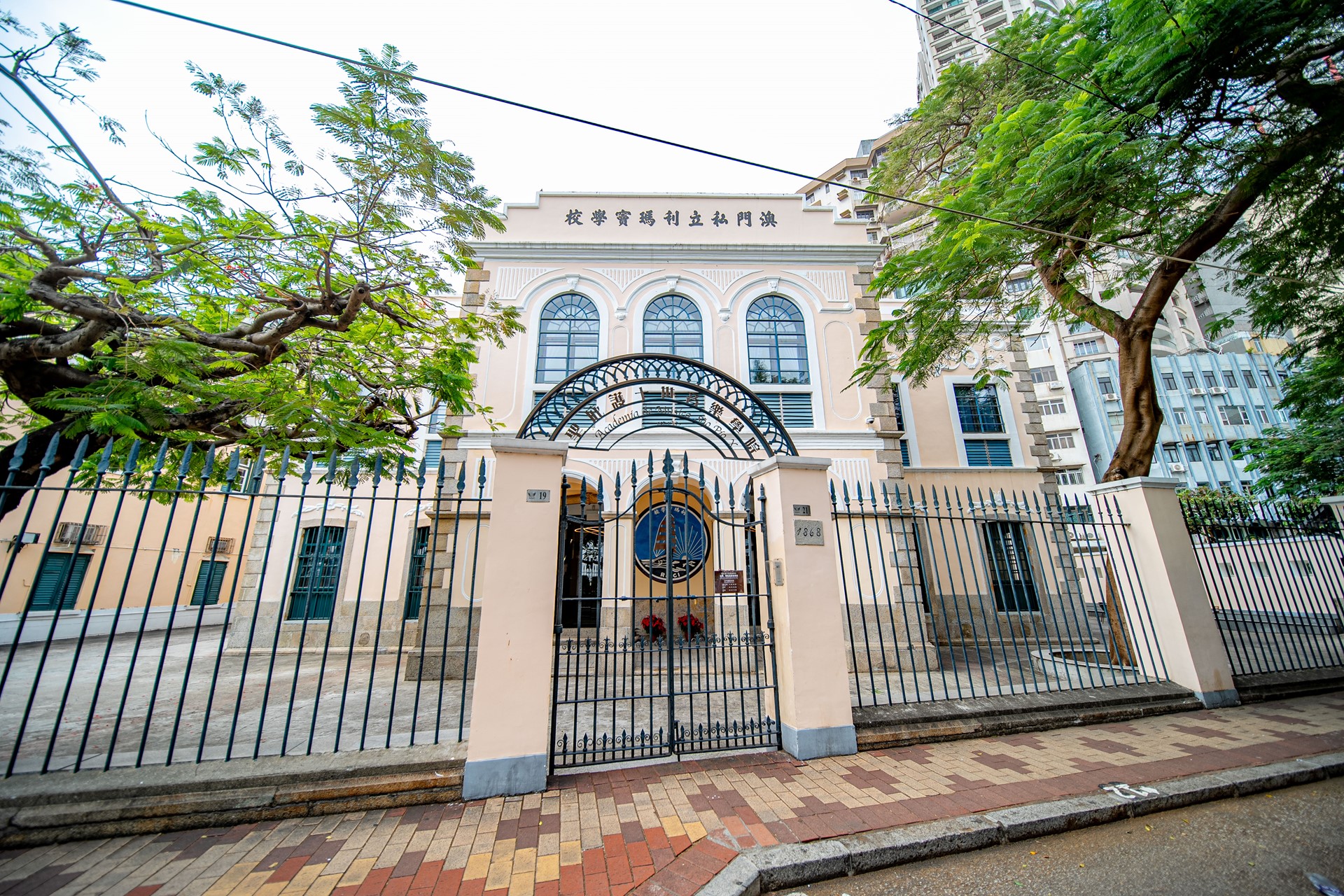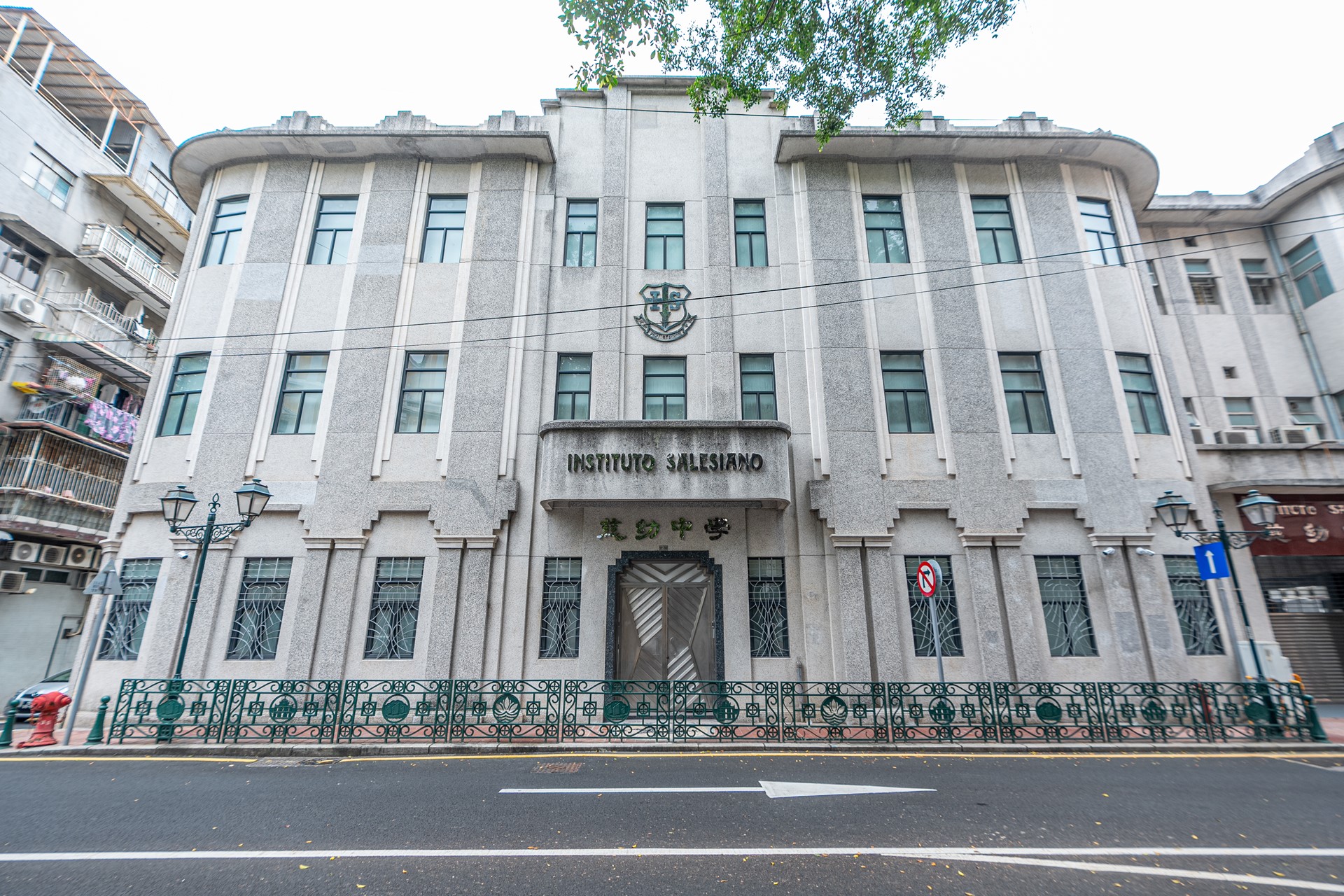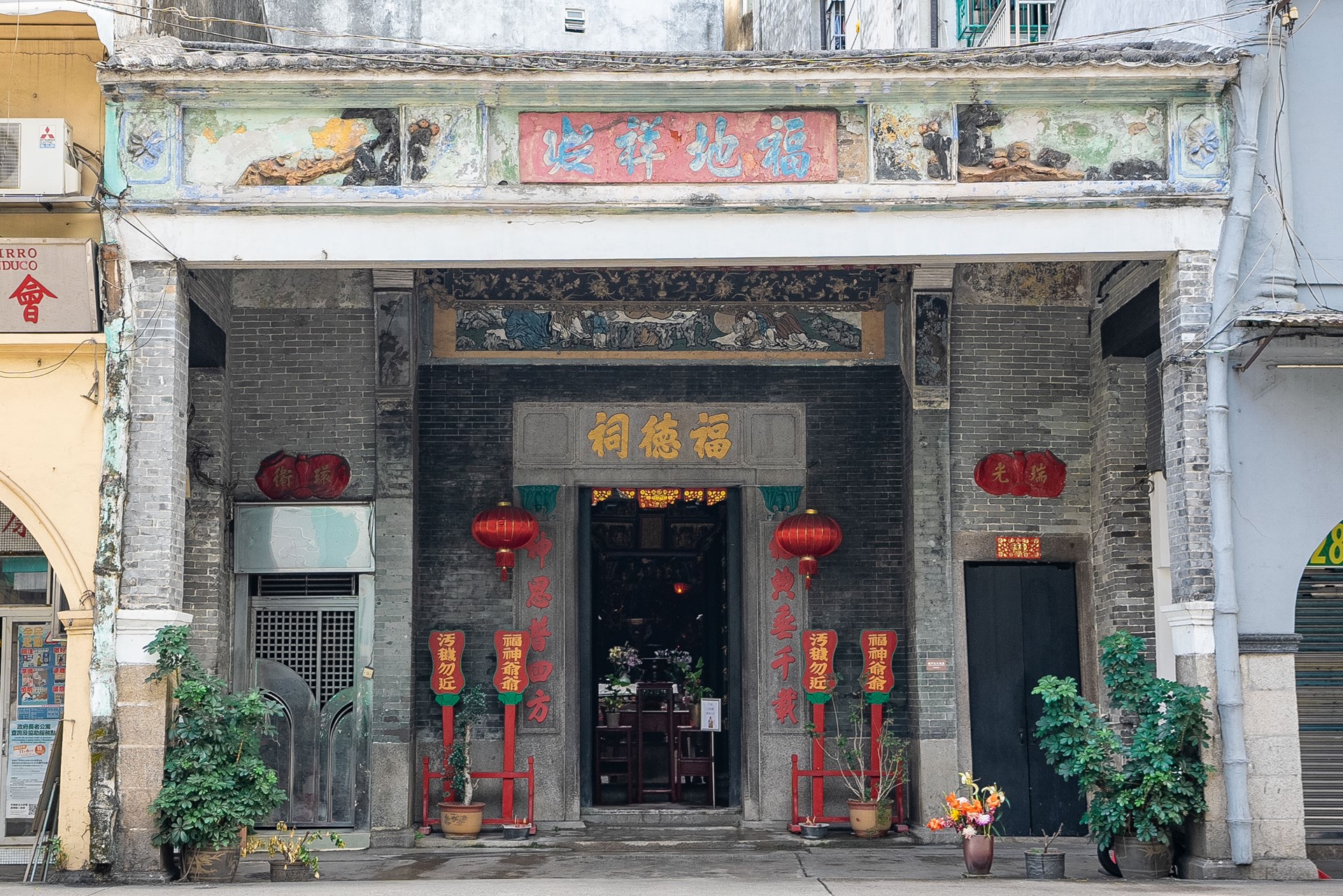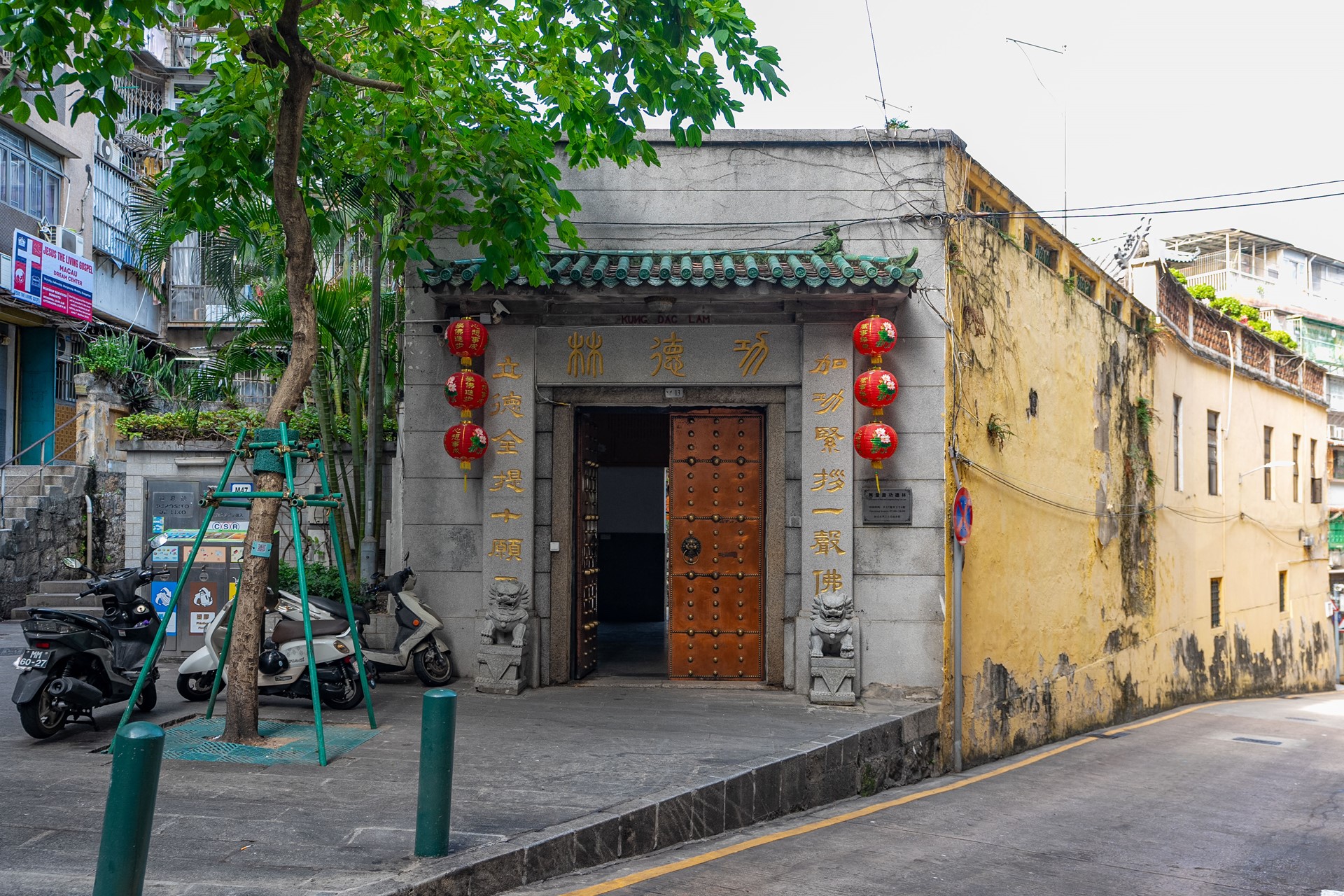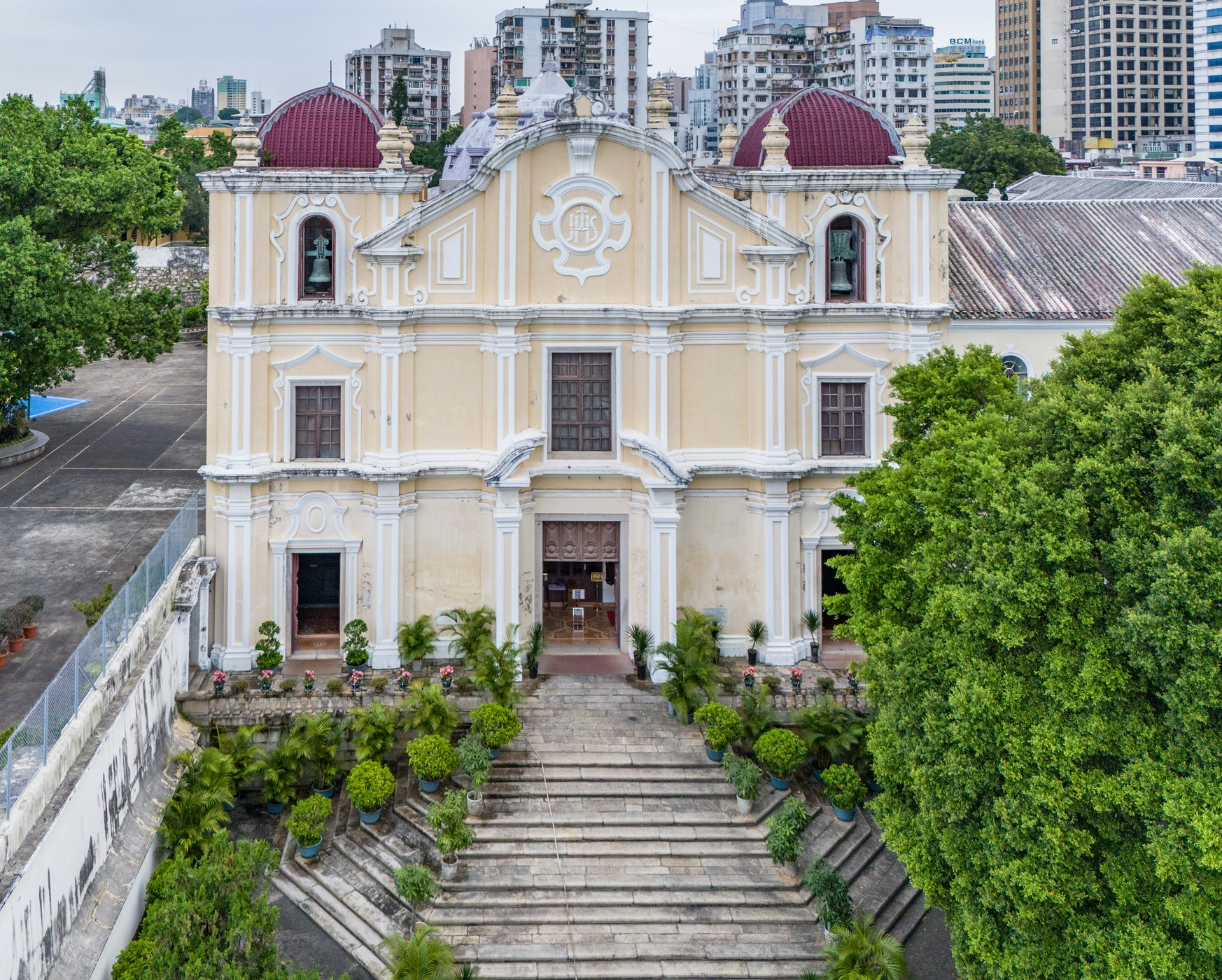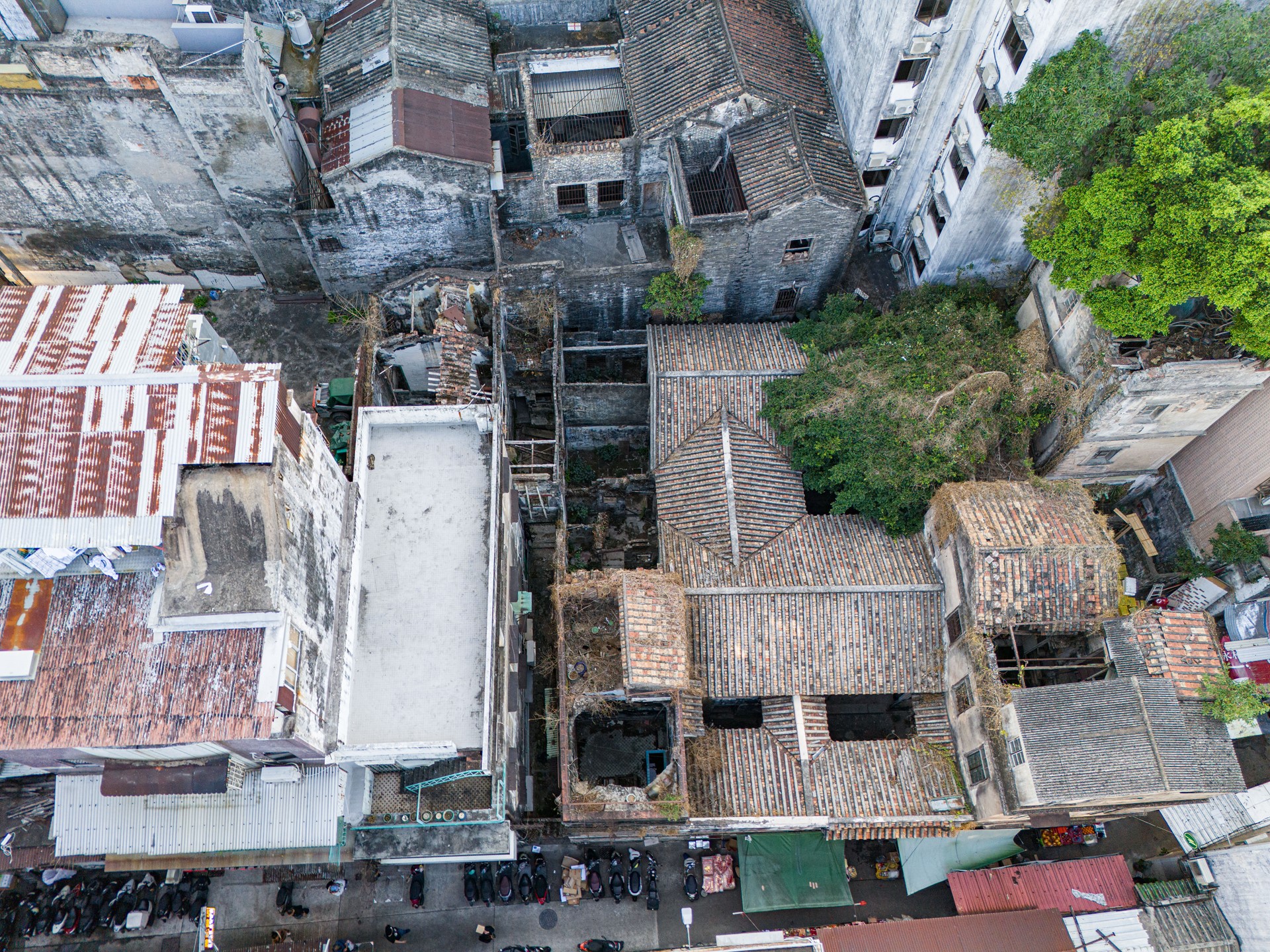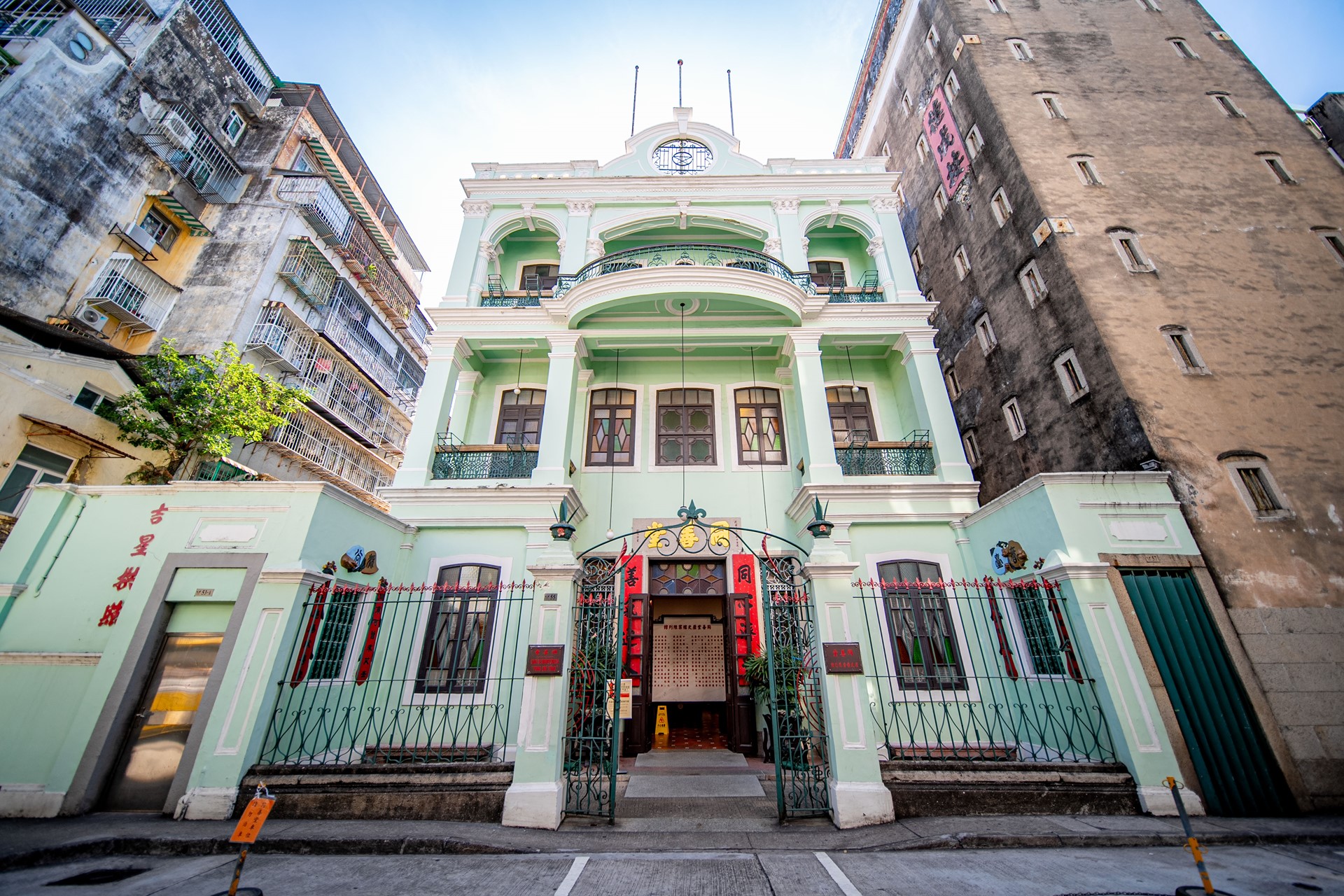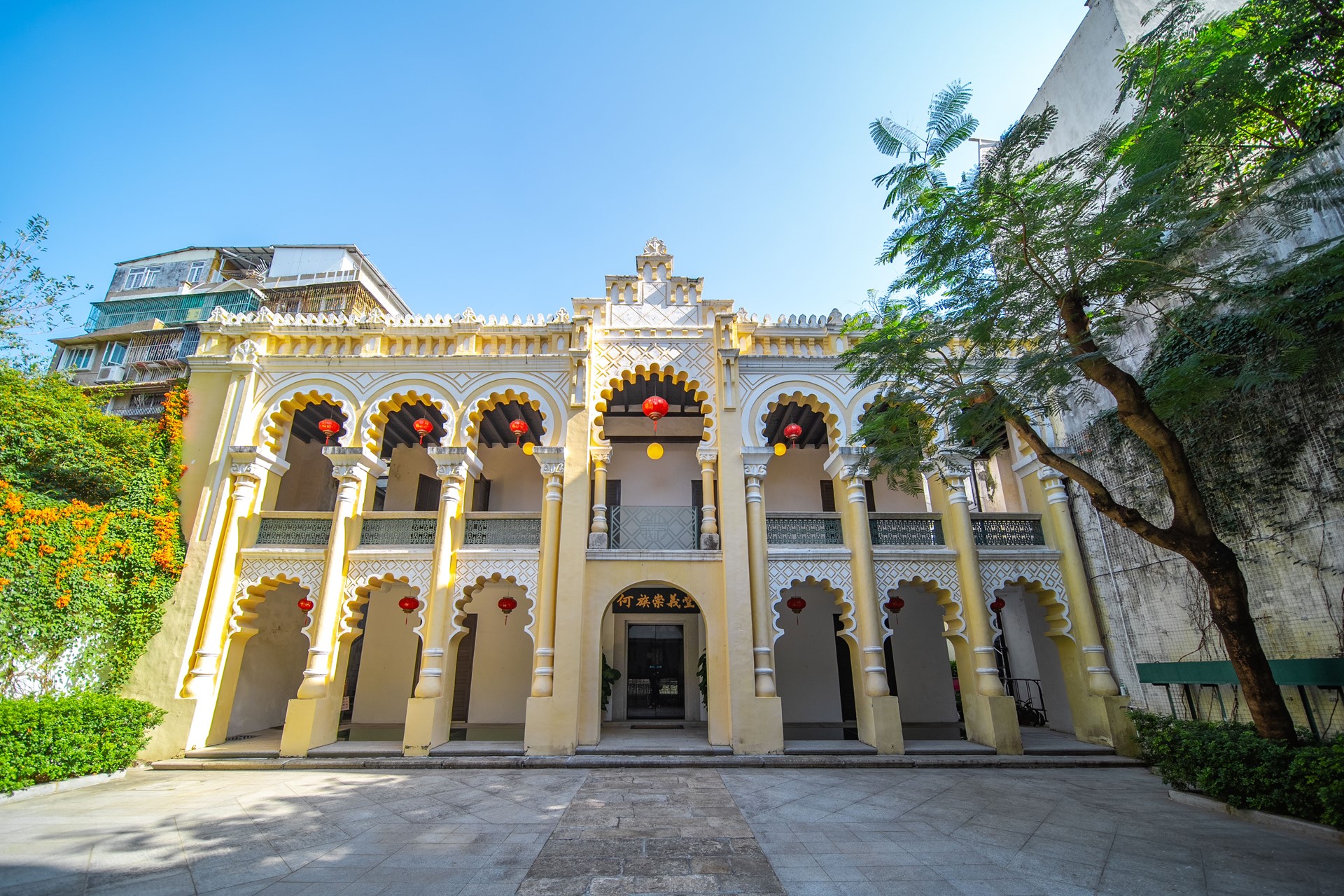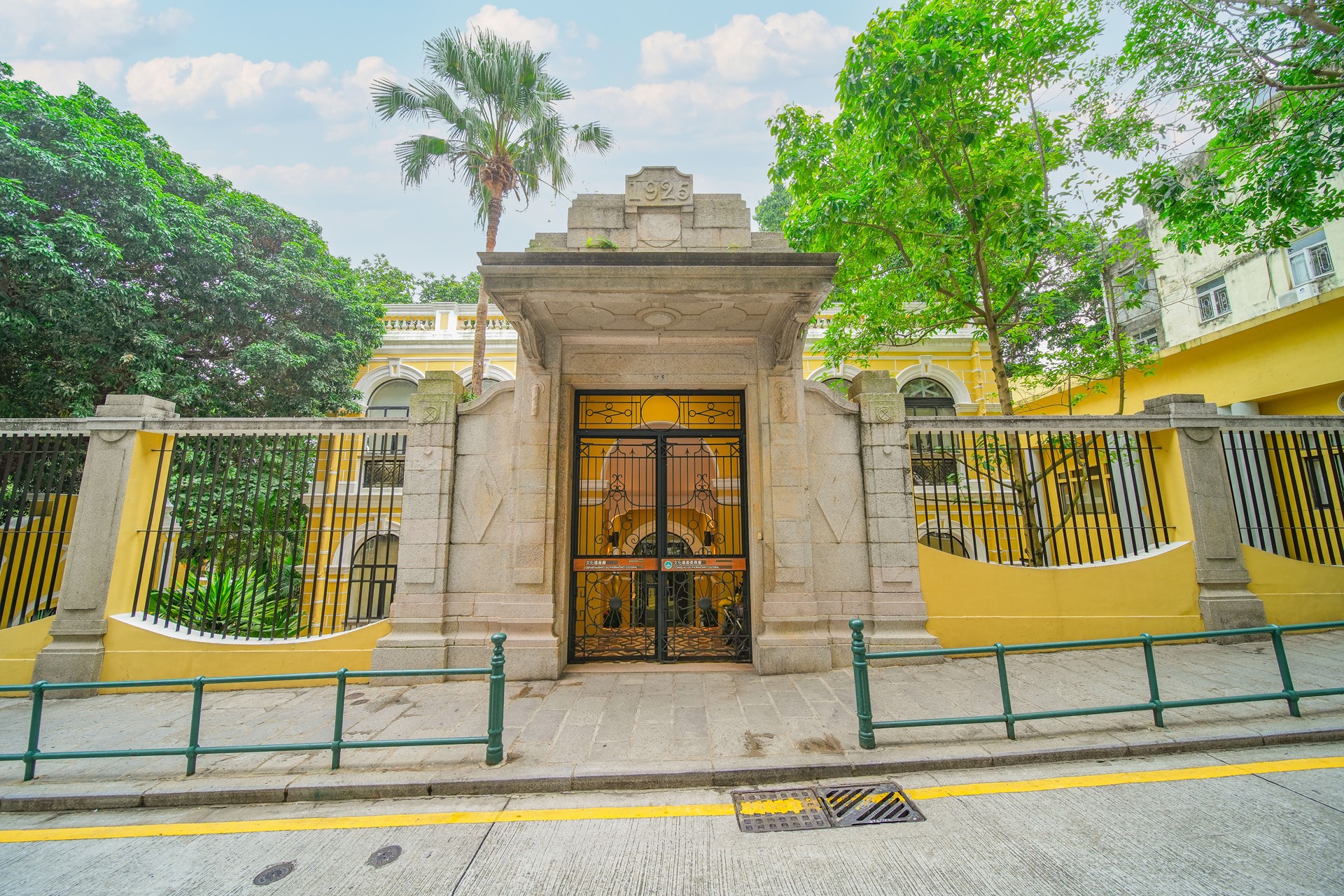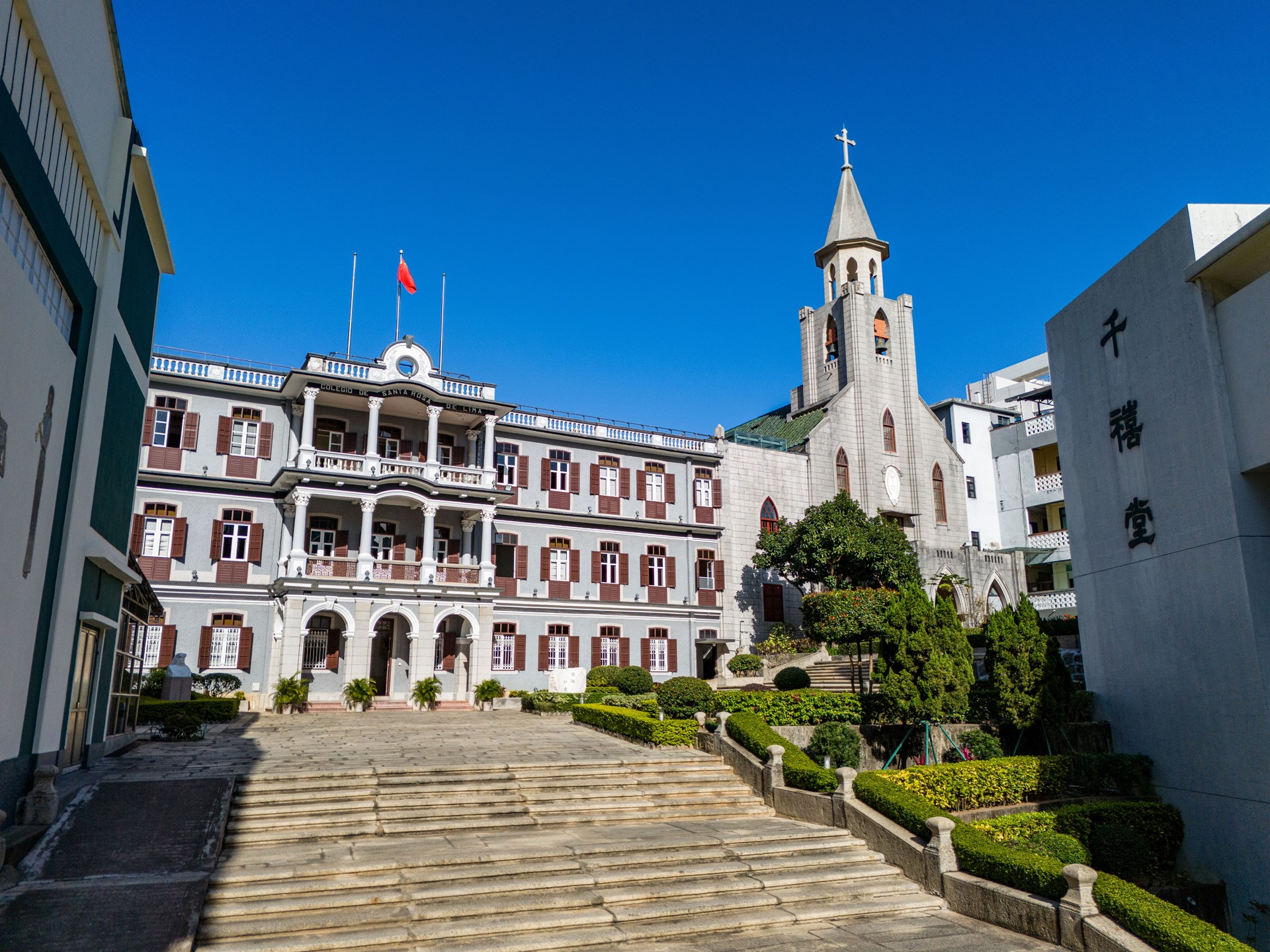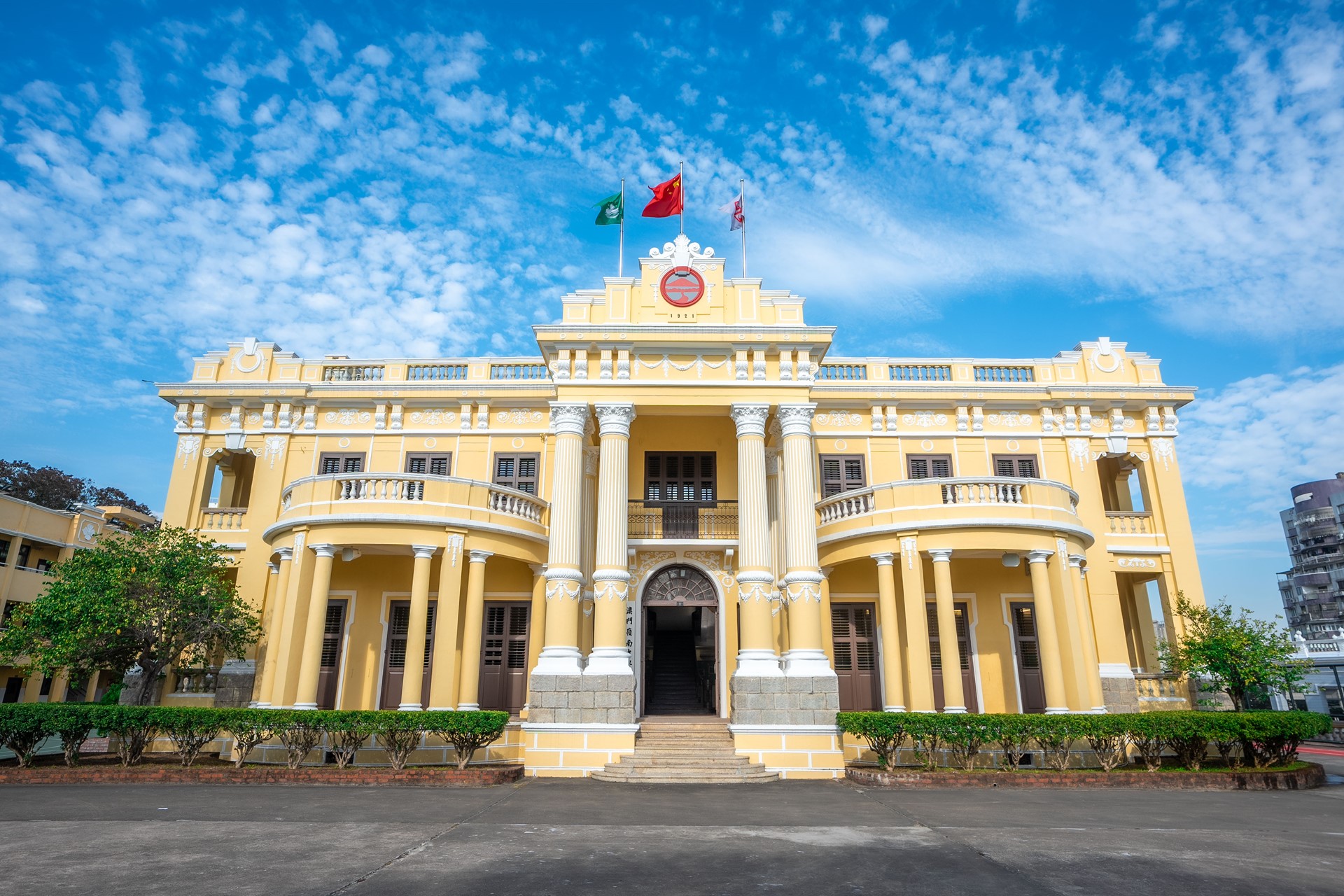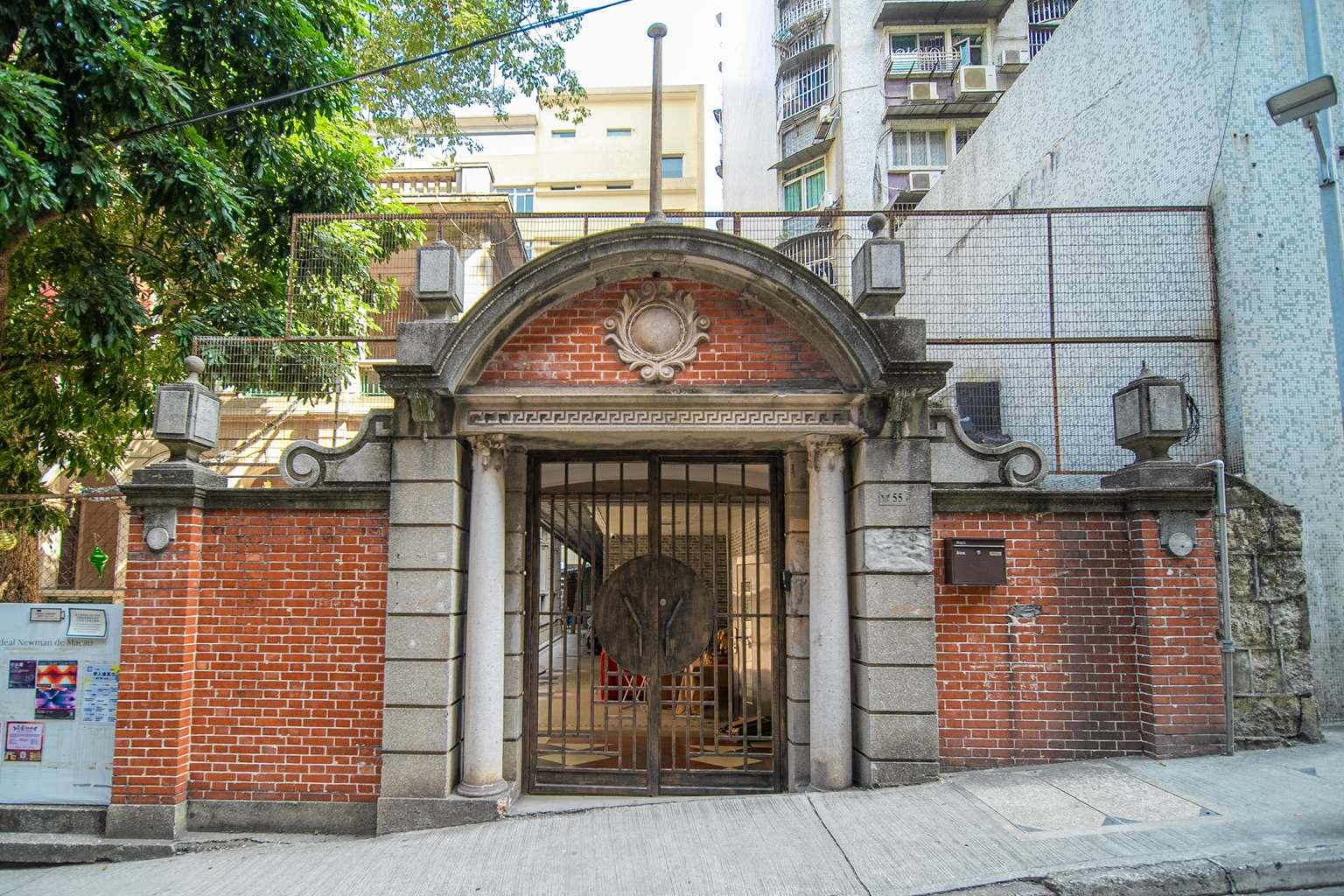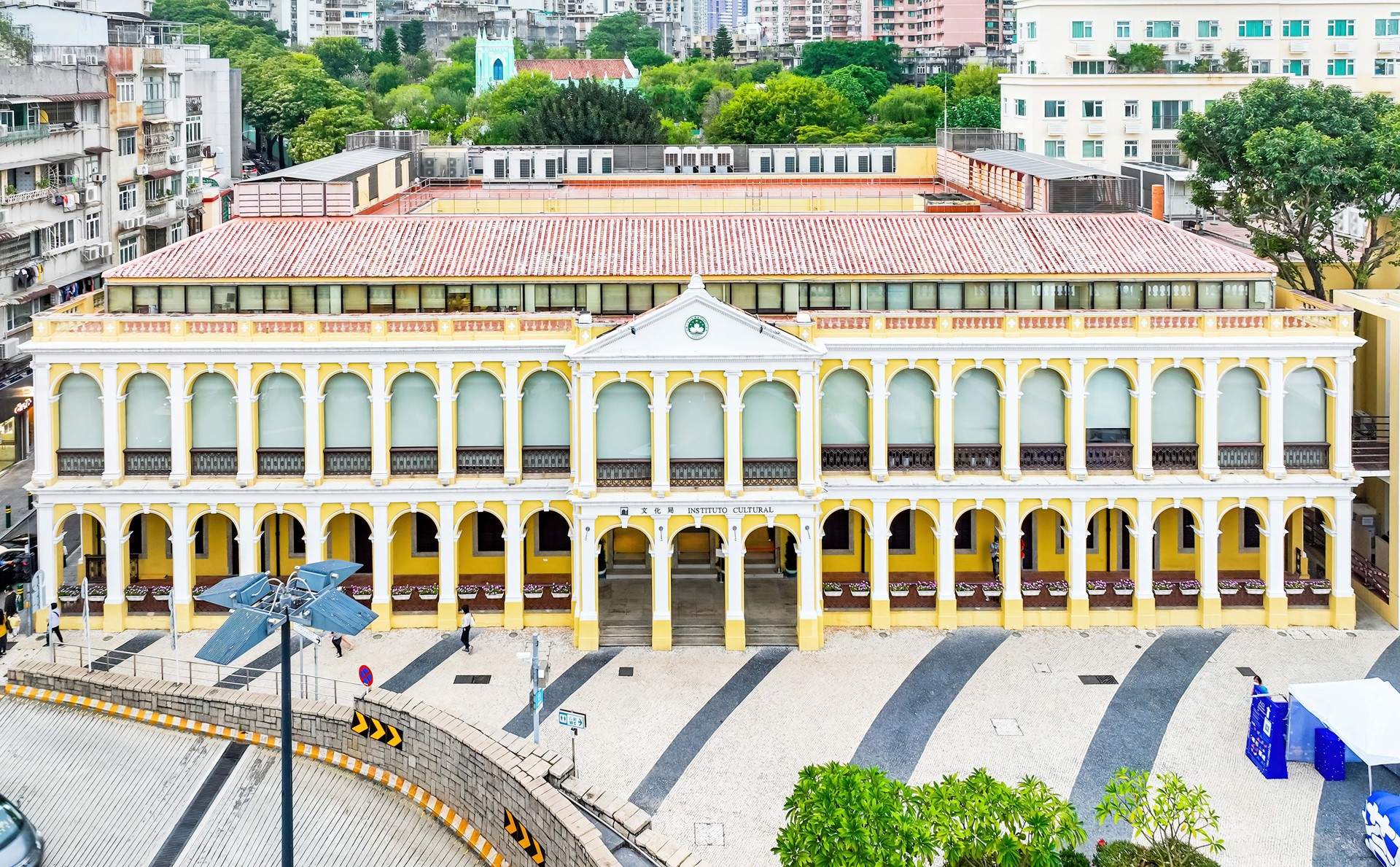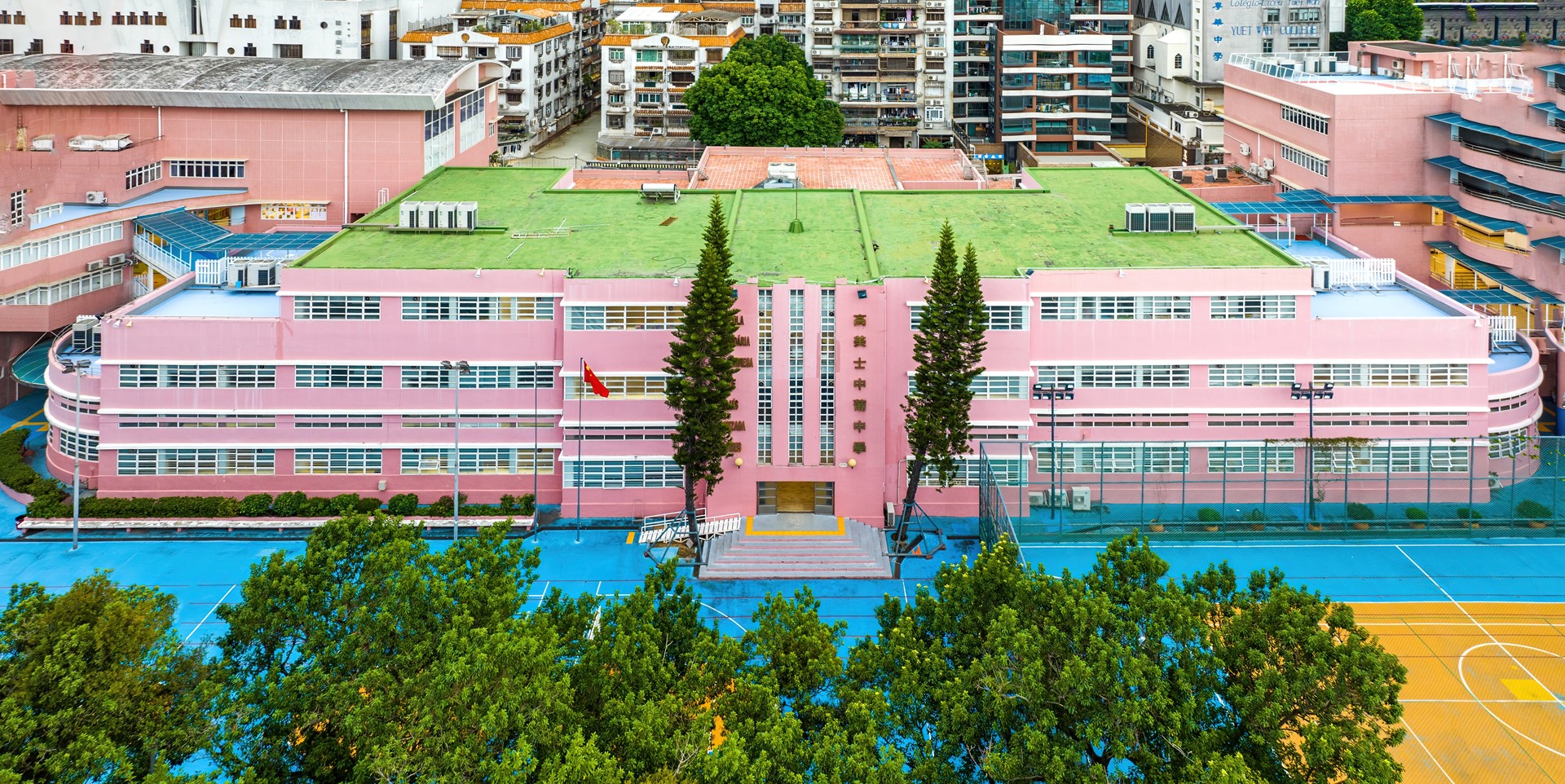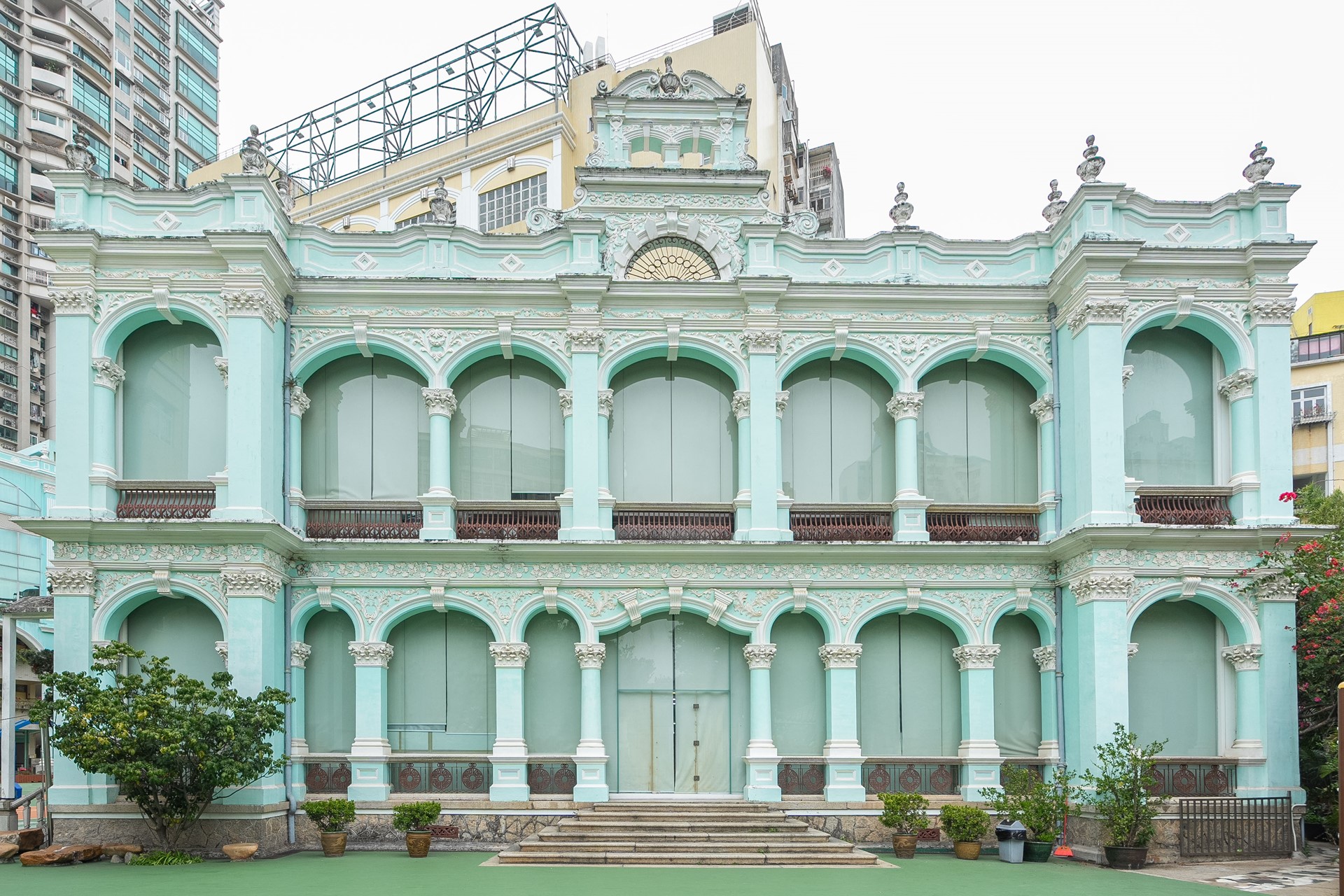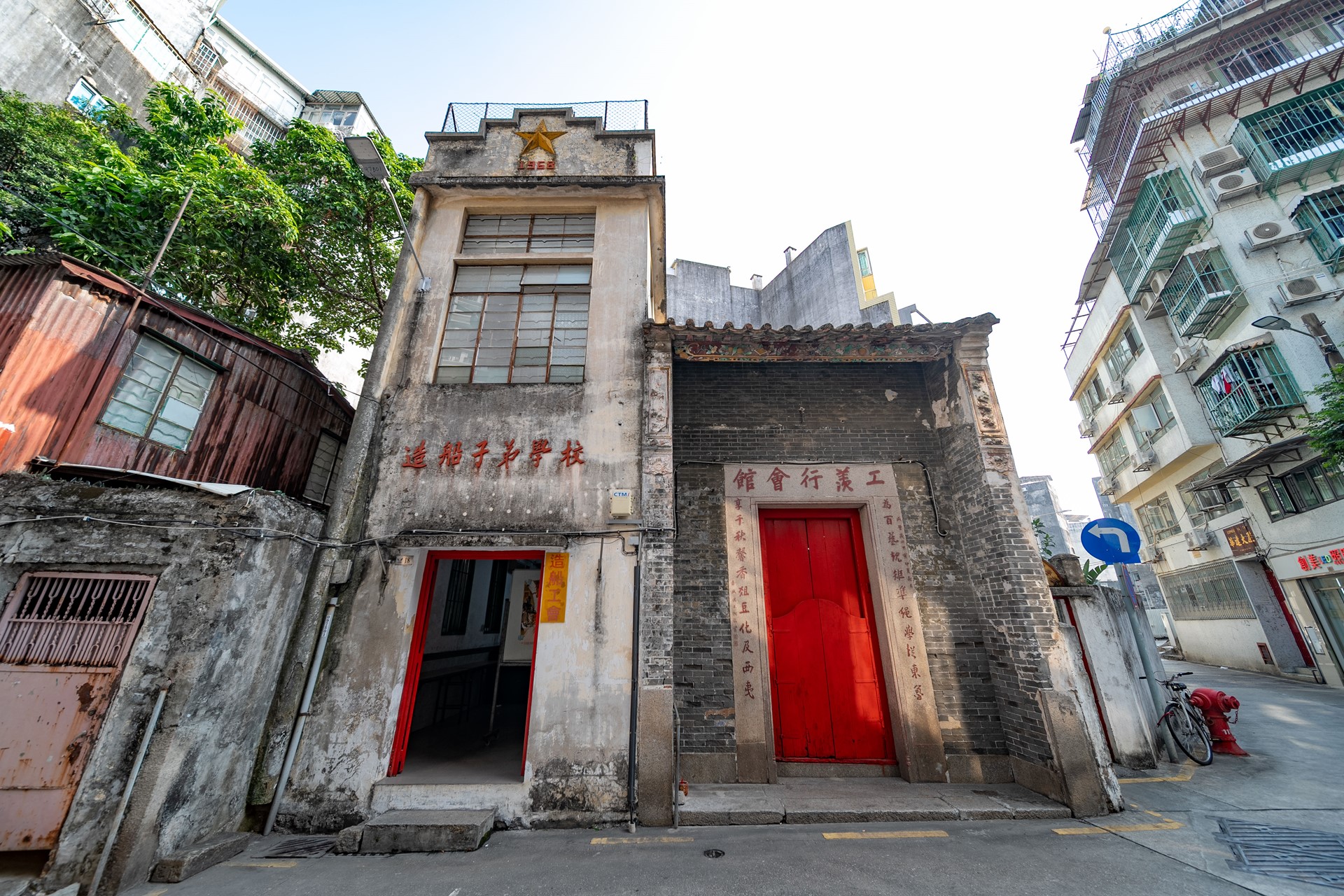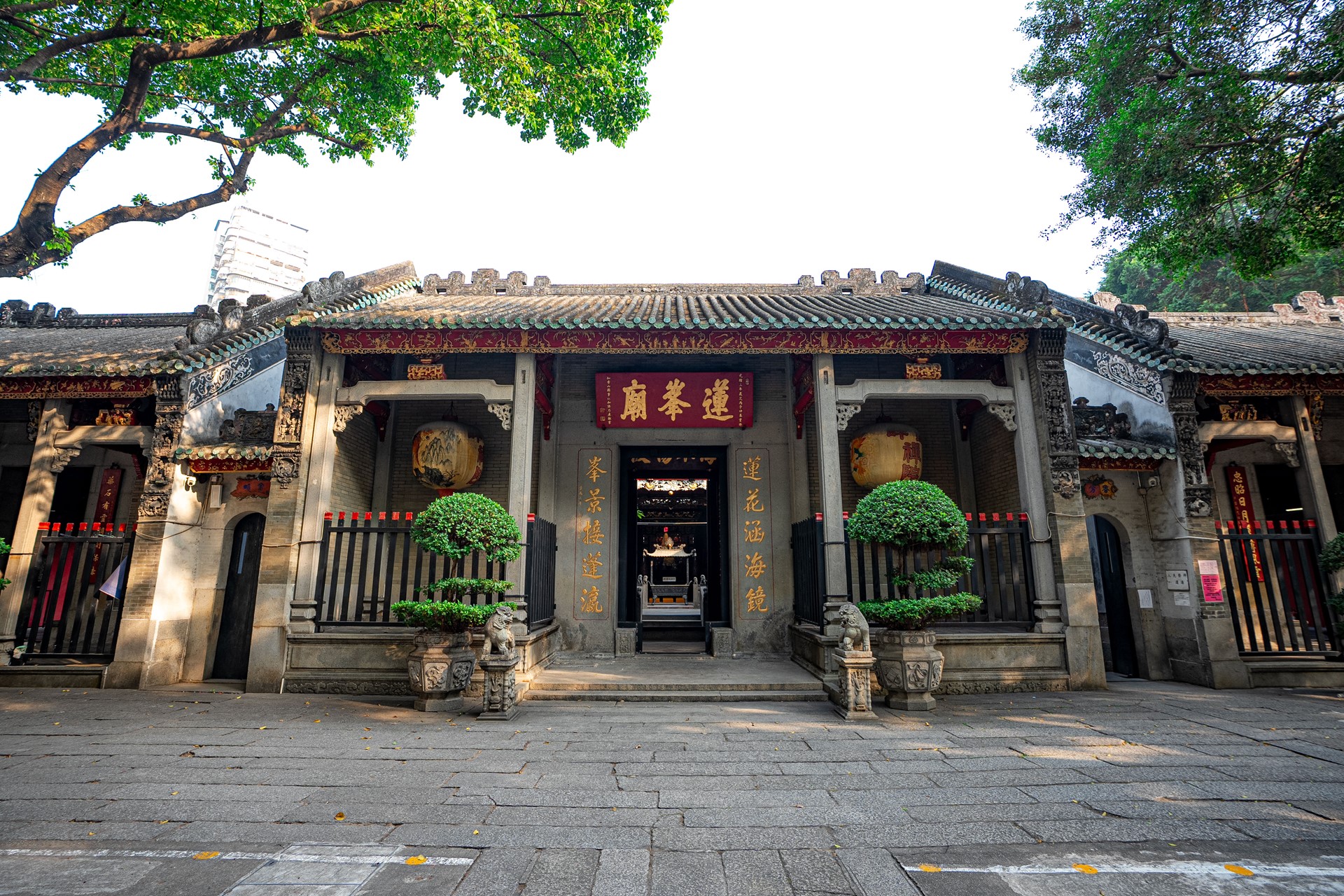The building of the Macao Ho’s Clan Association is located at no. 35, Rua de S. Paulo. Records indicate that a building was already constructed on this site as early as 1885. In the early 20th century, the building housed the “Chinese Club” operated by the Portuguese. The main façade of the building, with two floors, has a Moorish Revival design, with two levels of arcades, composed of horse-shoe shaped arches, separated by columns, and geometric decorative elements. Originally there was a staircase in the front courtyard, which led directly to the second floor.
To unite the Ho Clan in Macao, the Macao Ho’s Clan Association was established in 1933. In 1955 the association purchased the entire property at no. 35, Rua de S. Paulo to serve as its headquarters and for educational purpose. Under the support of the chairman and first principal, Mr. Ho Yin, Sung I School was founded. As the number of students grew, the school opened a branch on Rua de Tomás Vieira and also acquired no. 13, Travessa da Paixão, a neighboring building, for use as school building, while the front courtyard of the association headquarters served as the school playground. In addition to providing primary education during the day, Sung I School also offered free evening classes. The school ceased operation after the 1970-71 academic year. Subsequently, the premises were lent to Kwong Tai Middle School during the day and to Seong Fan Evening Middle School in the evening until 2002, when both schools relocated. Afterwards the site was then used as part of the campus for Saint Rosary’s School until 2010.
In the 1950s, Macao welcomed a large number of migrants from mainland China, and the need to provide education for the children of these migrants became urgent. To face such dire situation, many patriotic organizations, trade unions, and clan associations stepped in to operate schools, with Sung I School being an example initiated by a clan association. These schools, either fully or partially free, contributed to the stability of Macao’s society and the continuous development of basic education.
In 2010, the Cultural Affairs Bureau of Macao carried out restoration work on the building and no. 13, Travessa da Paixão, during which archaeological remains from different periods were discovered, including sections of chunambo (rammed earth) walls and stone walls.
